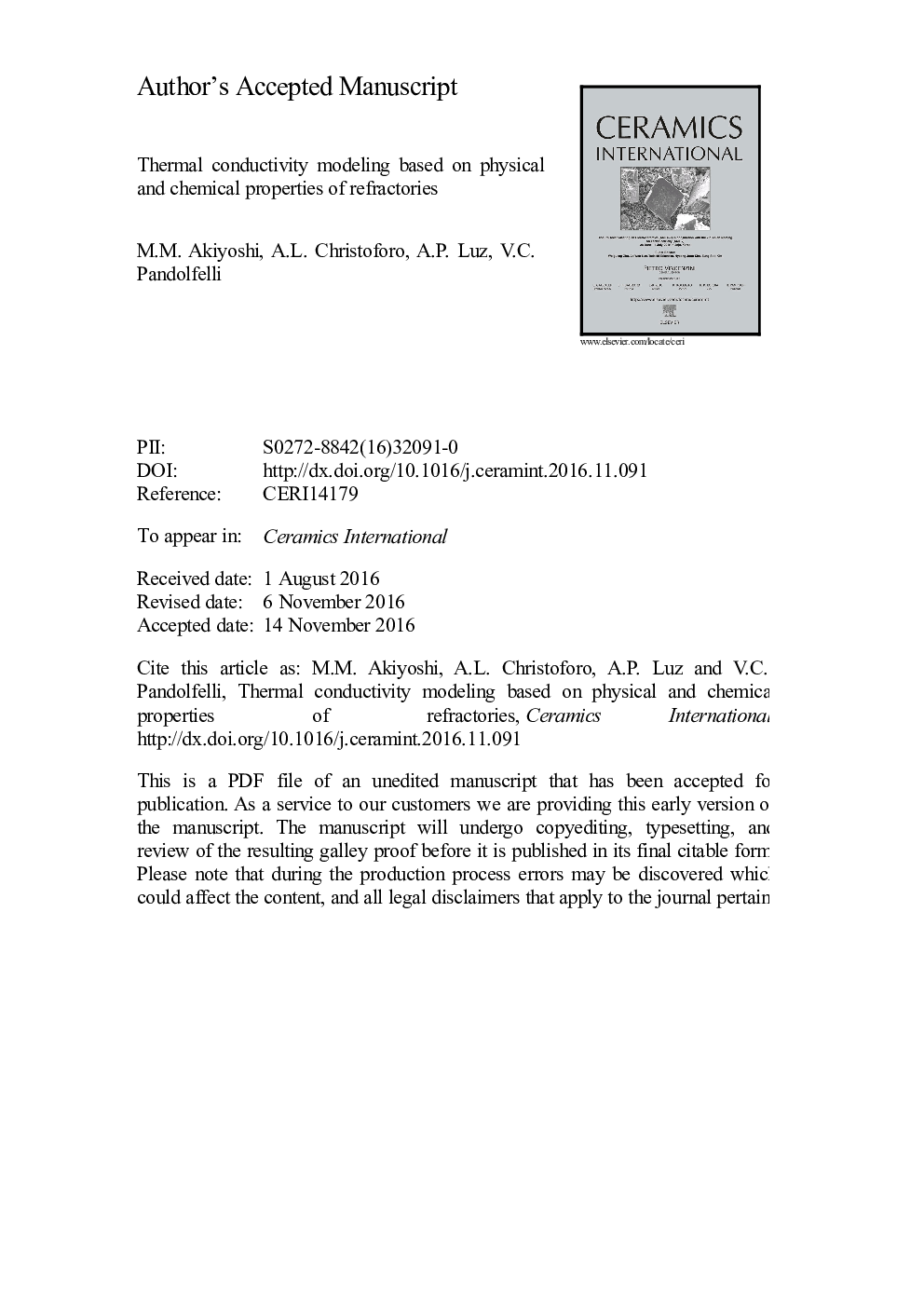| Article ID | Journal | Published Year | Pages | File Type |
|---|---|---|---|---|
| 5438596 | Ceramics International | 2017 | 34 Pages |
Abstract
Thermal conductivity (k) is one of the most important properties in the design and optimization of refractory linings, as well as for defining safe heating and cooling schedules. Mathematical models for predicting refractories' thermal conductivity have been proposed in the literature but, in general, they were simplified equations focusing on correlating k with density, alumina content or temperature. This work addresses the development of general expressions for k predictions as a function of physical (density, porosity) and chemical (oxide content) parameters with the temperature for Al2O3-SiO2 and Al2O3-CaO-based refractories. The parallel hot wire technique was used to measure the thermal conductivity of insulating, dense and low-cement-containing (LCC) commercial products in the temperature range of 25 °C to 1000 °C. According to the results, the most suitable mathematical model correlating k with the samples' density (apparent, volumetric or geometric) and temperature was the geometric one (r2=97.1%). When considering multi-linear models and the combination of more parameters (oxide content, density, temperature), lower r2 values were obtained (74.1-75.5%), indicating that this more complex and all-inclusive expression should lead to a less accurate prediction of thermal conductivity values. The advances presented will be a helpful tool for refractory producers and end-users.
Related Topics
Physical Sciences and Engineering
Materials Science
Ceramics and Composites
Authors
M.M. Akiyoshi, A.L. Christoforo, A.P. Luz, V.C. Pandolfelli,
